The Unlikely Marriage of Sustainability and IIoT
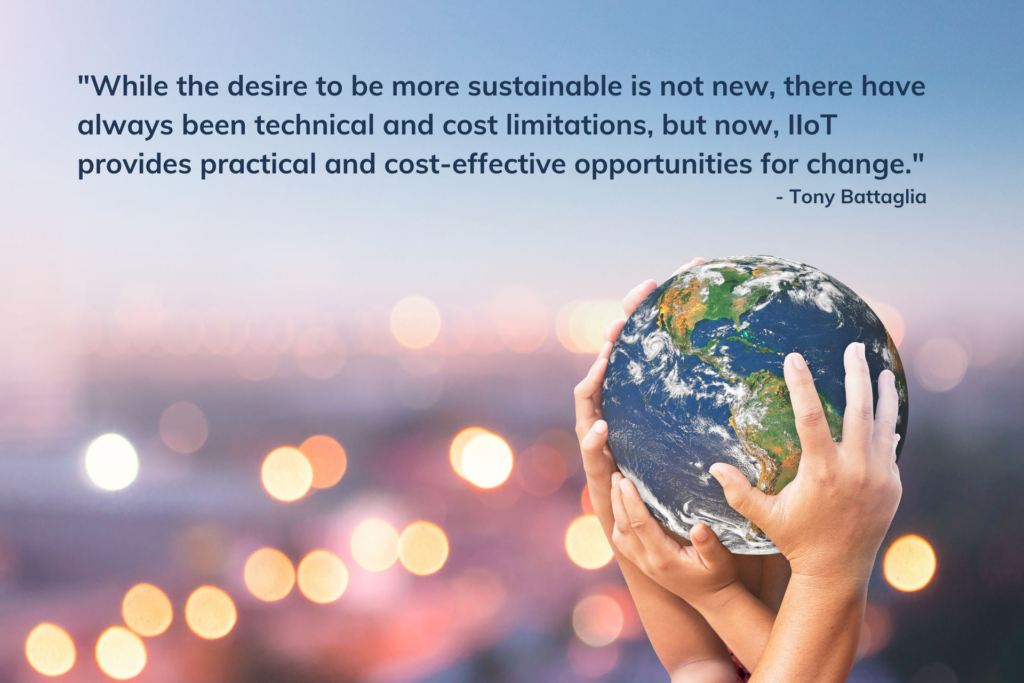
When I think about technology’s impact on sustainability, I think about home. I live in California, and earlier this year there was a fire in my area which, unfortunately, destroyed a lot of houses and affected many families. Luckily, because my city deployed industrial internet of things (IIoT) solutions for fire protection services, they were able to detect this fire early on and prevent further damage in the area. In this scenario, IIoT solutions provided timely insights which allowed the appropriate resources to respond faster, creating a better and safer future for my community. The unlikely pair Sustainability is a widespread conversation these days, and for good reason – a more environmentally conscious world equals better quality of life for us all. As such, electric cars are on the rise, paper straws are everywhere and many companies are doing their part to minimize their carbon footprint. As a collective, we are making great strides in our attempt to create more eco-friendly communities. Amidst our best efforts, however, many may not realize the positive and profound role modern technology, specifically IIoT, can have on our journey towards a greener society. This may come as a surprise, but now more than ever, IIoT is playing a key role in realizing our sustainability goals. Real-world change Today, IIoT technology is completely enhancing our approach to transformative environmental practices by providing the power of response. By implementing IIoT into our data, we can do much more than just monitor data; we can actually respond to data by pulling trends, sending out alerts, leveraging artificial intelligence and so much more. IIoT allows us to take data-driven action, and this is ultimately having a significant impact on the environment and entire industries across the globe. Industry-wide impact In 2015, The United Nations Member States all adopted the 2030 Agenda for Sustainable Development. This global partnership calls countries into action to create a stronger planet by implementing eco-friendly strategic practices to achieve 17 different Sustainable Development Goals (SDGs). Technology plays a significant role in realizing these SDGs. In fact, there are a variety of industries becoming more sustainable because of IIoT. Let’s look at energy, for example. Recently, the energy space began implementing environmental and social governance (ESG) criteria. Now, different organizations can receive access to various federal funds depending on their ability to meet ESG standards. Without the use of IIoT practices, procedures and functions, these organizations could not make the improvements needed to contribute to their environmental goals. With the use of IIoT, these same companies can effectively monitor and manage environmental assets through automated procedures that contribute to more efficient industries and remote work environments across the board. Ultimately, IIoT technology offers the insight and practical solutions needed for these companies to create positive structural changes. The benefits don’t stop there. We’ve all heard or read that our water supply is endangered, and this is not just a California issue, like many assume; it’s a widespread problem that needs immediate attention. The rapid rate of water decrease is not just a byproduct of human consumption, it is also a direct result of everyday processes, industrialization and the ever-changing climate. Today, IIoT products are providing simple solutions to monitor timely data metrics like rainfall rate and water consumption. These solutions respond to water shortages and water waste in innovative ways. Through IIoT, we now have the ability to adjust and adapt our behaviors based on data visualizations, and throughout the process, greater sustainability is achieved worldwide. The IIoT difference on finite resources With sustainability, the goal is really to manage the lifespan of an existing asset, be it drinking water, livestock, oil and gas, the list goes on, and with IIoT technology, we can better control our ability to manage these assets. While the desire to be more sustainable is not new, there have always been technical and cost limitations, but now, IIoT provides practical and cost-effective opportunities for change. At FreeWave Technologies, we’re committed to improving life’s essentials through Industrial IoT solutions. Our full line of connected IIoT network solutions bring most needed data to operations teams wherever they are and our ready-to-deploy solutions play a significant role in environmental monitoring ultimately leading to safer and more sustainable communities. When it comes to Environmental IoT™ we are spearheading a new way forward, offering solution-based products that empower industrial leaders to manage their assets simply and intentionally. Our single pane of glass dashboard creates a singular view for our customer, allowing them to track, control and respond to timely data metrics in one place instead of multiple dashboards across applications. Products that solve problems are important, and that’s exactly what we’re providing at FreeWave. We’re shifting the culture of sustainability from altruism to action, and it’s making a substantial difference. At the end of the day, I care about the world that I’m leaving for the next generation. Every day I think about my two children and the world they’ll grow up in; I want to do my best to create a place where they can thrive, and I’m excited to be a part of an organization that is achieving just that.
Technology’s Impact on Air Quality Control Monitoring
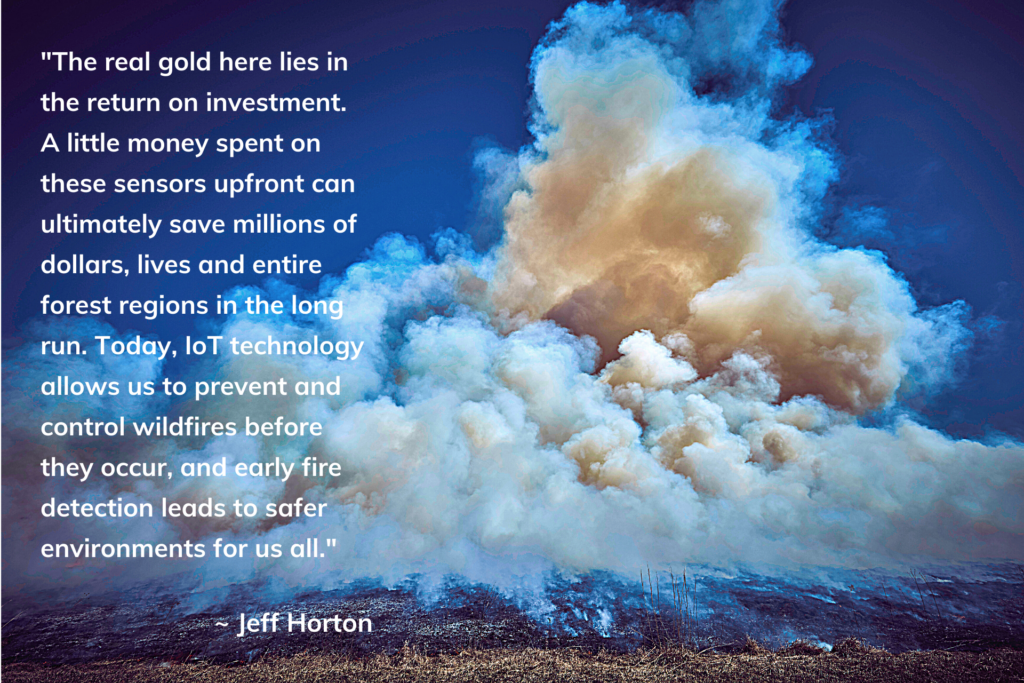
At this very moment, wildfire season is currently underway in North America, and since the start of this year alone, more than 27,000 wildfires have consumed nearly two million acres according to the National Interagency Fire Center (www.nifc.gov). Though many people hear the word “wildfire” and immediately picture a forest in California, the reality is these natural disasters are prevalent across the country. Wildfires are everywhere The Verge, a technology news website, announced recently that roughly 56% of homeowners in the United States face some sort of wildfire risk in the upcoming decades. Bottom line: wildfires are becoming more prevalent and costly every day, and these fires are affecting more than half the population and significantly changing our quality of life. Just a few decades ago, we didn’t have the technology to prevent or predict changes in the surrounding air quality, but now we do, and through it, we can create a better world. Today’s technological advancements allow us to be proactive rather than reactive when it comes to our overall health and safety. By leveraging sensor technology, we have a better chance of predicting and preventing significant changes in the environment, like a drastic shift in air quality before a wildfire begins. This insight allows us to make better decisions based on intentional insights, and our increased access to data provides us with the right information to better control our surrounding environments. Technology is powerful, and this power can and should be used to our advantage. One of my favorite ways to witness the power of technology transforming real-world issues is by exploring the ways sensor technology has a tremendous impact on air quality control monitoring. Today, internet of things (IoT) technology and satellite are the best tools for early detection and prevention of wildfires. Our approach to air quality control Believe it or not, air quality has as much impact on the world as the daily temperature. With climate change causing drastic shifts in the environment, it’s important that we pay close attention to the quality of the air we breathe, as it affects our overall quality of life. As you know, trees play a critical role in our ecosystem, so we must be very intentional and proactive about protecting the forests around us. This is where sensor technology makes a big difference. With a small machine, we can now track and predict changes in the environment and our surrounding air quality, which ultimately helps us control, prevent and predict conditions that lead to wildfires. At FreeWave, we provide autonomous sensors that are strategically placed in remote locations to track and record relevant data metrics such as temperature, humidity, wind, direction and particulate matter. These readings help industry experts know what’s in the air and how the air is changing. Once this data is collected and transmitted to the cloud, we are then able to analyze it and provide alert and proactive responses where needed. We have created a single pane of glass approach, where anyone with access can log into a portal and see in real-time what is happening in the areas surrounding their deployed sensors. The interesting thing about our sensors is that they are fully powered by solar energy, and satellite signals transmit the recorded data. We are basically offering a “buy, install and forget” resource that makes life significantly easier for industry and environmental experts. There is a ton of value here. Not only are we taking an in-depth look at what’s going on in the environment through air quality control monitoring, but we are also taking that information and transforming it into action. The real gold here lies in the return on investment. A little money spent on these sensors upfront can ultimately save millions of dollars, lives and entire forest regions in the long run. Today, IoT technology allows us to prevent and control wildfires before they occur, and early fire detection leads to safer environments for us all. A unique human aid We are making life simpler and safer for all by using technology to do what humans can’t. Back in the day, people had to sit in an operation tower for hours, looking out to catch any major changes in the environment. Today, there is a major shortage of people willing to do this kind of work, and can you blame them? As humans, we can only be in one place at a time doing one thing at a time, but with technology, this is not the case. With simple sensors, we can now monitor and control a lot more environments at a much more affordable rate. All this to say, the goal here is not to replace humans with technology as some might think; what we are really doing is enhancing human ability through the power of technology. I’ve worked in technology for over 30 years, and every day I witness its evolution. I know it’s hard to imagine a world without cell phones, but I can still clearly recall the days when cell phones took up the entire trunk of a car, and now look at the world, most of us carry the same ubiquitous smartphone in our pockets. Technology is amazing, and we have the opportunity to use it to our advantage. At FreeWave, we are taking the capabilities of mobility – LTE, 4G, Satellite, Wi-Fi, Bluetooth, 900 MHz– and marrying them with sensors. The data we gain from these sensors is saving us time, money and resources. At the end of the day, we’re taking away the need to “overthink” industry issues, like how to better prevent forest fires, and instead are replacing our questions with data-informed predictions and timely proactive responses. Every day, we strive to provide industry leaders with the tools and technology needed to spearhead faster and safer environments for us all. This is certainly not a boring business, and I thoroughly enjoy working for a company that is using technology to have an impact on the things that matter most.
Got Data? Now what?
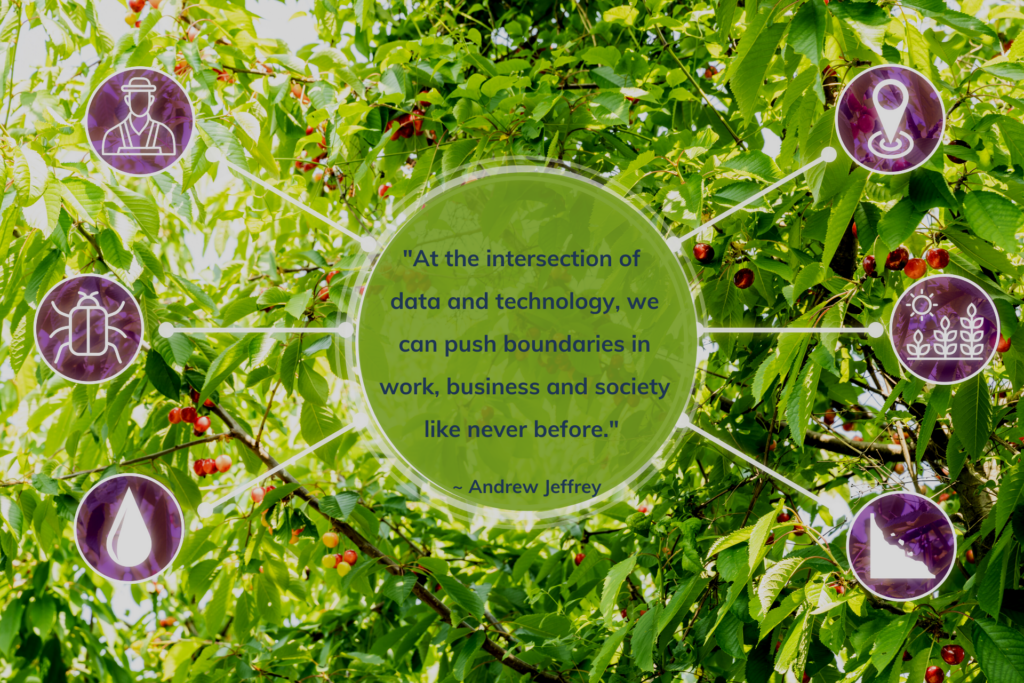
It’s hard to imagine a world without the daily convenience of modern technology. Just yesterday, I joked with my kids about the world before the internet – a time when we actually had to go to the library to look up unknown information. I can still remember the early days of my college career back in the late 90s, the internet had just come out, and we were all getting used to this new phenomenon called a “search engine.” Life has drastically changed over the last 25 years. Now, nearly all the information we want and need is at our fingertips. Today, we have more access to data than most people know how to handle. Data is all around us, collected through the day-to-day actions and reactions of our lives. When we take the time to intentionally analyze, interpret and distribute the data metrics available to us, we can make smarter and more efficient decisions. There is so much to explore, and while our increased access to data is pretty interesting, the reality is that the combination of data and modern technology can change the world. Like many things, though, there are two sides. Sure, industrial companies can capture huge amounts of data, but it also raises the question: now what? How do you put all that data to work? Breaking barriers and pushing boundaries At the intersection of data and technology, we can push boundaries in work, business and society like never before. Data insights allow us to be more precise and accurate in our day-to-day work, which allows us to be more effective and efficient. The operational benefits here are endless, including improved quality control, reduced energy consumption, enhanced safety and increased operational consistency. Just take a look at the food industry, for example. Many field workers in smart agriculture rely heavily on data insights to control, predict and create the best environments for quality crops and harvest. The more accurate their predictions, the better their harvest, and the better their harvest, the faster we receive our food through the supply chain. Today, internet of things (IoT) technology can connect remote and mobile assets, like a tractor, for instant data access, making it easier for farmers to be more efficient and effective in their work. It’s really amazing when you think about it. Data is transforming how we operate in this world, creating better environments for us all. The FreeWave impact At FreeWave, we are constantly pushing the boundaries of technology to create faster, smarter and more efficient work environments. I’ve been a part of the FreeWave team since 2019, and I am constantly amazed at the ways our technology provides innovative solutions for real-world issues. Our products enable our customers to improve their work processes, and through our single pane of glass approach, we offer a simplified experience for businesses and industry leaders to receive automated technology that transforms data metrics into real-time execution. One of my favorite use cases to discuss is FreeWave customer that uses drone technology to deliver food and other valuable resources to far-reaching areas across the globe. With FreeWave products, they can run a smarter and more efficient operation. Their robotics delivery system is combating many of the complex access challenges the world faces on a daily basis. Our IoT technology is helping them solve complex issues with simplified tech solutions, and simple solutions create more time, energy and space to focus on what matters most: people. If you need a product to help you bridge the gap between technology and data, FreeWave is your solution. We are enablement partners, helping every one of our customers accomplish their complex goals. It’s inspiring to work with brands and businesses striving to create a difference in real-world issues. Our technology plays an intricate role in sustaining work environments and supporting entire industries around the globe. Data makes the difference At the end of the day, data is more than mere statistics; data is the key to our efficiency, productivity and safety. Data makes the difference in energy consumption reduction. Data makes the difference in the overall quality and safety of our daily environments. Data makes the difference in everything. Every day we have the opportunity to use data to our advantage, and at FreeWave, we are helping industrial innovators do just that. As technology continues to evolve, we will continue to provide top of the line IoT solutions that transform data into actionable insights and execution so you can not only access a treasure trove of data, but also know exactly how to answer the age-old question: now what?
Data is everywhere, even on Mount Everest: Sensor-to-cloud and extreme environments
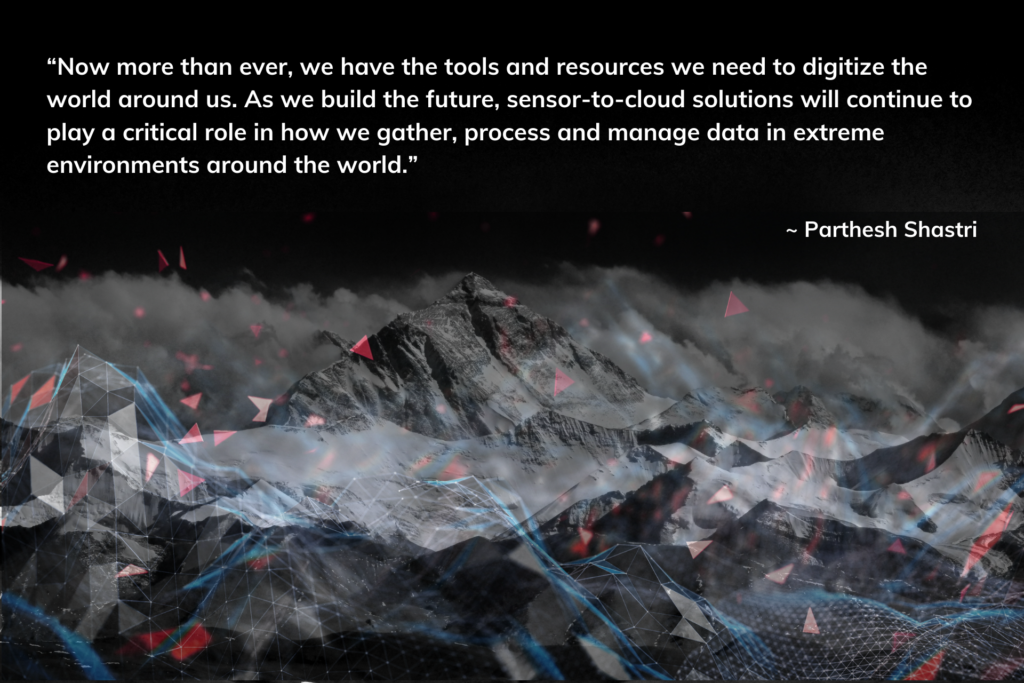
Technology – from Mount Everest to the farm It’s amazing what technology can do when paired with human will. Just a few years ago, a team of scientists made history as they trekked up Mount Everest with the goal of running environmental studies. With backpacks full of sensors (which included FreeWave technology), these men pushed boundaries to create a new normal. When we intentionally use modern technology to our advantage, we can create better, safer and more productive environments within every industry. Today, the same technology used on Mount Everest is now powering multiple earth science programs transmitting sensor data from remote environments to earth scientists, climatologists and meteorologists through cloud servers. This is just one example of many where sensor-to-cloud solutions have transformed our ability to interact with extreme environments in the modern world. A deeper look at extreme environments Typically, when someone thinks of an extreme environment, they imagine harsh, rugged terrain in a far-off remote location; however extreme environments aren’t limited by this definition. Take a large farm, for example, with a multitude of deployed assets and equipment across hundreds of acres. Traditionally, an operation like this requires an employee to physically check on the farm equipment multiple times a week, manually turning valves on and off, in addition to monitoring and controlling the overall farm environment. These day-to-day tasks are not only time-consuming but physically draining. In this case, the operational output required on the farm makes it an operationally extreme environment, and extreme environments are just one space where sensor-to-cloud solutions shine. Sensor-to-cloud in the real world Today, sensor-to-cloud systems utilize deployed sensors to collect and transmit data from remote locations. These sensors send the gathered information back to cloud servers for further research and analysis, enabling entire teams to utilize their limited time and resources more effectively. With sensor-to-cloud systems, we eliminate the often-laborious mechanics of middlemen procedures so that industry leaders can focus on what matters most. Let’s revisit that farming example. With sensor-to-cloud technology, farmers can automate the repetitive tasks of their operations. Something as simple as discrete soil sensors further allow farmers to virtually monitor their crop health, creating more time and space to focus on other high-value tasks. This gives them time, often an invaluable asset, to do what’s needed. In a sense, we can improve the productivity of an operation with an automated suite of sensor systems. Imagine the difference a network of sensors can make. The FreeWave difference For several years now, FreeWave products have been a leading resource solution for extreme environments. Our sensors were a part of the great Mount Everest expedition, and today, we have deployed sensors in many areas, including pipelines in Alaska, ice shelves in Antarctica, smart farms across the country and many other locations – rugged and traditional. We are providing the groundbreaking technology needed to monitor data in extreme environments so that our partners and customers can make the best, informed decisions for their operations. As the Chief Technology and Product Officer at FreeWave, I am constantly amazed at the impact our products have on the world. We are working with some of the major brands of our time, helping them solve massive problems affecting society at large. Our technology solutions serve entire industries, like oil and gas, agriculture, transportation and traffic, as well as many others that contribute to the well-being of the globe. It is great to be a part of a company where we can say our products are a part of the solution for life’s essentials. Every day, we help industry leaders identify their pain points and provide them with a single pane of glass product solution that helps them see the data wherever they are without the drain of additional resources. Our rich portfolio of radios, gateways, cloud software and analytics allows us to stitch together a range of packaged ready to use applications that solve our customer’s problems through simple, turn-key solutions. Sensor-to-cloud in the future Data is everywhere, and now more than ever, we have the tools and resources we need to digitize the world around us. As we build the future, sensor-to-cloud solutions will continue to play a critical role in gathering, processing and managing data in extreme environments around the globe. As I look at the world before us, I see endless opportunities to continue to leverage technology and data to build a better and more informed life.
The Importance of Data in the Life of Bees
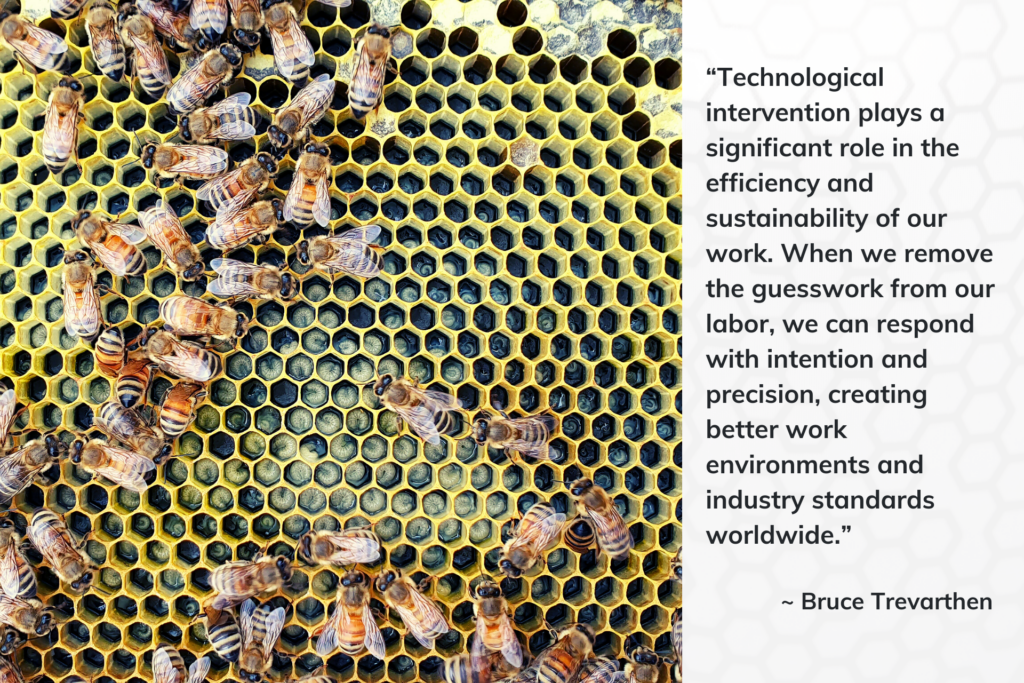
Have you heard the buzz? Data is everywhere, informing, influencing and affecting the direction and decisions of our lives daily. Due to modern technology, we now have access to a world of knowledge that was otherwise unavailable just 50 years ago. This data is gold, and when we intentionally utilize technology to mine and refine it, we can create a more sustainable world. Industrial internet of things (IIoT) technology makes a sizable and sustainable difference in multiple industries – including apiculture, the business of beekeeping. Much to my surprise, I learned that taking an intentional approach to data collection and distribution profoundly impacts the lives of bees and surrounding societies. Data and beekeeping In 2019, I went on a mission with my company ModuSense to create an IIoT solution that could aid specific industries with several deployed assets in need of environmental monitoring. After exploring applications in forestry and horticulture, our journey led us to apiculture farming and the high value commodity of honey. I believe in fully immersing myself in business and technology, so I became a beekeeper to understand the complexity of the apiculture industry better. Beekeeping is a high-value asset in New Zealand and Australia, almost exclusively because of the manuka honey variant. While traditional clover or bush honey may earn between $4-6 dollars a kilo, manuka honey can earn as high as $200 a kilo, making every drop critically important. Proper hive monitoring is essential for quality production, but beehives (especially the manuka variant) often grow in difficult terrain within remote locations, making them challenging and expensive to access regularly. Without IIoT technology, beekeeping is a naturally complicated process. Oftentimes, beekeepers must utilize helicopters to deploy and check on their hives, which is time-consuming, expensive and challenging. However, with the right IIoT solutions, such as sensors that monitor hive conditions, the beekeeping process is simplified, increasing productivity and overall harvest quality. With access to the right data, beekeepers don’t have to check on the internal conditions of their hive manually; instead, they can manipulate and control the hive’s environment from afar through sensors to create optimal conditions for production.This IIoT technology is helping us augment the beekeeping process through effective data monitoring, which is ultimately creating a simpler and more sustainable approach to hive operations. Simple solutions In many ways, beekeeping is quite similar to dairy farming, meaning better environments create better products. When cows receive access to the best pastures, they inevitably produce better milk which then creates better dairy products for us to consume. The same is true in the life of bees. When bees intentionally receive access to the best environmental conditions and quality nectar, they are able to become high-strength, crop-ready colonies which naturally produce a high-quality harvest. Effective regulation of the bees’ environment is critical to ensure the best yield, and this is where IIoT technology is making a world of difference in the apiculture industry. Bees are incredibly sensitive to barometric pressure, humidity and temperature, all of which play a role in their ability to produce as a colony; bees also need to maintain a central weight to operate at peak performance. As such, the best way to ensure a quality harvest from a beehive is to maintain the colony’s weight and manage the hive’s temperature. With proper data insights, we can do this remotely by studying and monitoring the internal collective health and conditions of the hive. Without lifting the hive’s lid, which disrupts the harvest process, we can virtually control the bees’ environment without the extra cost or time of added deployments. These insights are easy to monitor from a single pane of glass, making critical information accessible faster than a bee can fly (which is pretty fast at 20 mph!). Integrating special IIoT sensors, we developed the HiveBeats Environmental Monitoring Sensor, HiveScale V5 and Brood Monitoring Sensors that now provide precise insights into the life of a bee, which ultimately determine if and when human intervention is needed. This allows for significantly fewer errors to occur and saves time and money along the way. Data connects life – for bees and people At ModuSense, we are proud to develop timely IIoT solutions, including sensor devices, cloud-based data routing, data storage, analysis platforms and connectivity hardware to provide solutions that are easily deployed and ready to fit for purpose. In partnership with FreeWave, we are committed to accelerating hardware and software IIoT development capabilities in meaningful and immediately measurable ways for remote industries around the globe. As the CEO of ModuSense, I am proud of the work we have done to create real-life change in the world of apiculture. Our special sensors enhance the hive cultivation process by extracting critical internal data insights, all while creating a culture of industrial sustainability for beekeepers along the way. We are creating a new way forward by leveraging the power of IIoT technology to monitor data and using that insight to respond with actionable execution. Sustainability is about finding ways to use less to do more and our ModuSense sensors are doing just that for beekeepers around the globe. Today, technological intervention plays a significant role in the efficiency and sustainability of our work. When we remove the guesswork from our labor, we can respond with intention and precision, creating better work environments and industry performance worldwide. I am proud to contribute to this type of change in the life of bees and beyond.
Is Your Farm Losing Money from Rural Broadband Issues?
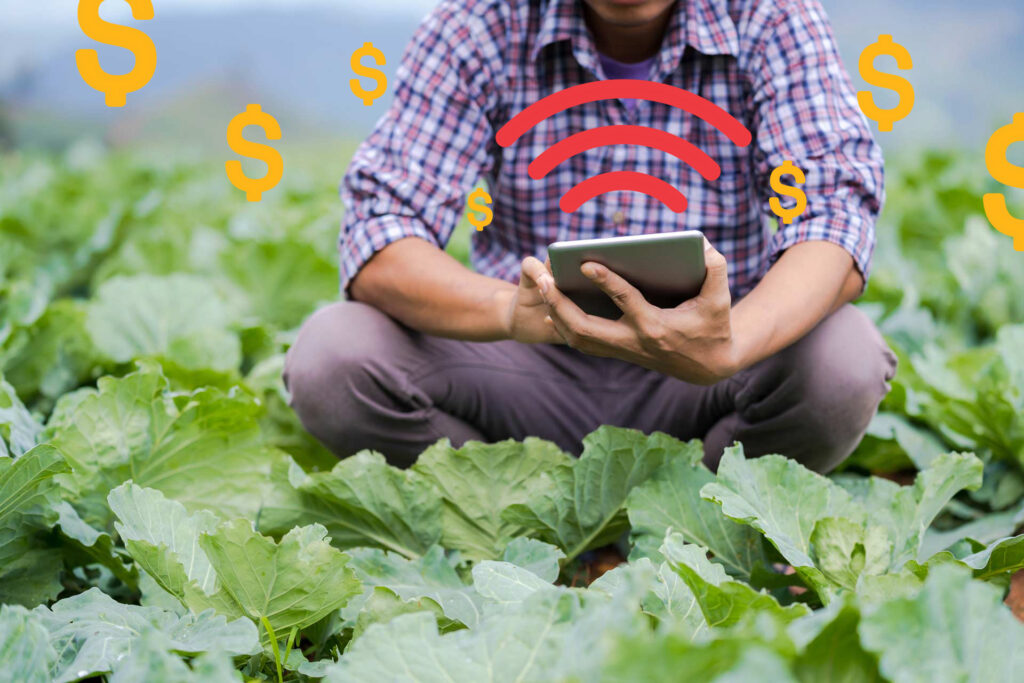
Today, of all things, a strong internet connection is essential for successful farming. So, is your farm losing money from the rural broadband issues you’ve experienced? Only a generation or two ago, it would seem almost nonsensical that farmers might struggle to keep up without internet access. Yet here we are, living in a world where 73 percent of farms say they have a laptop or desktop and more than half own a smartphone, according to a USDA report. With the rapid growth of precision farming, including digital tools and IIoT-enabled sensors that automate and improve the farming process, solid and reliable internet access will only matter more as time goes on. So, is your farm losing money from rural broadband issues or a weak connection? Learn more below. Why is Rural Broadband a Problem? Rural broadband is one of the most popular internet solutions for modern farming operations, but the simple fact is that it doesn’t always do the trick. Broadband is set up through a series of routers, which sometimes leads to spotty reception or inconsistent farm wifi systems. Rural internet is also not always available in some areas where farmers need it, which could slow down harvest production or cause farmers to hesitate when adopting new technologies. What Are the Disadvantages of Broadband? Connection speeds vary depending on location and signal strength. Rural broadband is often more expensive than in urban areas, which cuts into profit margins. Setting up broadband is time-consuming and costly and may require additional solutions. In rural areas with hilly terrain, such as Appalachia, broadband may not be an option at all. Broadband issues may prevent farmers from keeping up with automation trends (costing them money and reputation in the process) Why is Broadband Important for Farmers? Precision agriculture helps farmers use internet access to collect and analyze data, conduct business with vendors, and connect to IIoT-enabled devices, such as sensors or drones. How Do Farmers Get Internet? 27 percent of farmers have a digital subscriber line (DSL) 14 percent use a broadband connection through satellite 12 percent use a cable or telephone line According to Modernfarmer.com, 25 percent of U.S. farms still don’t have internet. What Percentage of Rural Areas Have Internet Access? According to the U.S. Small Business Administration Office of Advocacy, only about 73.6 percent of rural areas have robust and reliable internet access. With so many tools emerging that make farming more efficient and lucrative, this percentage is almost guaranteed to dwindle in the coming decades. Why Is There No High-Speed Internet in Rural Areas? For the most part, it comes down to price and technological limitations. Installing miles of fiber optic cables and 5G towers in remote areas doesn’t always make sense for internet providers, who may not be able to recoup their investment. Additional solutions such as a wireless bridge, which adds up to 60 miles of solid wifi connectivity, may be necessary even if broadband can be installed. This is one reason satellite technologies have become a solid solution for farmers living in rural and remote areas. Satellites used to be too costly to operate for most businesses, but that too is quickly changing. Do Farmers Need Internet? Looking at the tools a farmer’s competition is likely using, you’d be hard-pressed to say anything other than “yes” to this question. Without strong internet for farmers relying on agricultural automation methods, profit margins could drop and result in a loss of market share. Why is Internet Access Important for the Diversification and Rebranding of Rural Areas? In more ways than one, the future of agriculture will rely heavily on a solid internet connection. From automation tools that increase profits and yields to improving the quality of life for agricultural professionals and their families, internet connectivity is just as crucial for business as it is for personal reasons. As the world becomes increasingly global and digitized, it’s easy to forget the vital role farmers play in making our society work. In fact, it will be farmers who create enough healthy food for our rapidly growing population, which is expected to approach 10 billion people by 2050. See how FreeWave’s Fusion Bridge solution can upgrade the internet connection for your operation.
Frustrated With Your Farm’s Bandwidth?
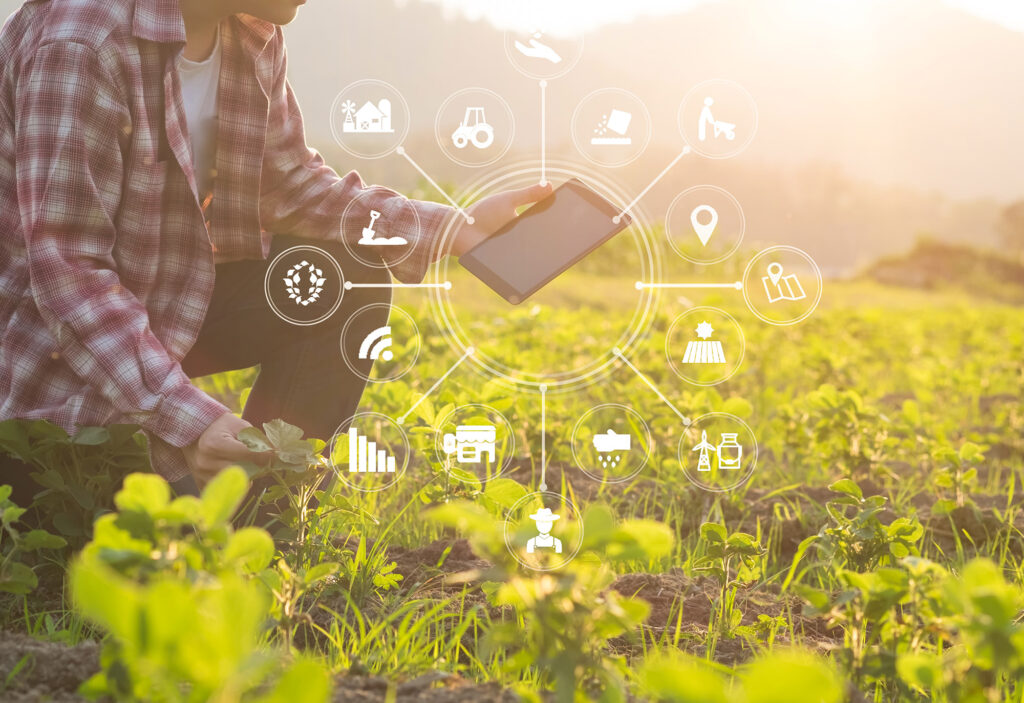
A good Internet signal is essential for smart farming and precision agriculture. A wireless bridge solution may just be the boost for your operations. In the age of smart farming and precision agriculture, a weak Internet signal is something that can no longer be tolerated. Your farm’s sensors and devices rely on solid WiFi connectivity to send and receive data, which is essential for boosting crop yields and healthy food production without expanding resources. If you’re frustrated with your farm’s bandwidth, a wireless bridge solution can extend your network and improve security at your operation. Learn how below. What is a point-to-point wireless bridge? As its name implies, a point-to-point wireless bridge connects two users wirelessly. Two routers, known as endpoints, typically link up through dual-radio Wifi radio or optical laser. Farm WiFi systems are often enabled through a point-to-point wireless bridge in an agricultural setting. This helps extend the range of Internet connectivity and enhances the signal in more remote areas of operation. Since many precision farming tools send and receive harvest cycle data in real-time, consistent and robust connectivity is essential. A wireless bridge can upgrade your network’s current capabilities and protect your data. What does a Wi-Fi bridge do? A wireless bridge is a tool that connects two WiFi networks over one wireless channel. This sort of connection is used in neighboring towns and districts, at manufacturing sites, and on large plots of land in an agricultural setting. What is the difference between bridge mode and wireless bridge? A wireless bridge connects two segments and enables data sharing between the two. Bridge mode is a configuration within your router that turns it into an access point for transferring data. Bridge mode essentially turns your router into a switch. It can help broaden WiFi access on a farm or rural area where connectivity historically has lagged or struggled, just like a wireless bridge. Depending on preexisting hardware and the size of the plot of land being farmed, one solution may be a better fit for you. How far can a wireless bridge reach? Three to five miles is the industry standard for many wireless bridge devices. But more innovative products, such as FreeWave’s Fusion Bridge, can be hooked up to existing networks and reach as far as 60 miles. Large farms, or those with multiple facilities located on the premises, can significantly benefit from this greater range. Plus, more than two networks can be hooked up, meaning home connectivity could also be added if you wanted. How do I set up a wireless bridge? Setting up a wireless bridge involves three steps: obtaining a wireless bridge and a second router, positioning the devices, then connecting them to the network so that everything’s safe and secure. The steps below outline the process: Choose a modern router that has bridge-mode capabilities. (Most will, but be sure to look when shopping.) Similarly, choose a wireless bridge product that fits your needs in terms of strength and distance. Position your bridge so that it’s in range of your current router. Place your new router in a location where you want robust Internet connectivity. Read your product’s guidelines and follow the steps to connect the bridge/router to your existing network*. *Make sure you activate all safety features, such as encryption and firewalls, on all devices to protect your data. Are you frustrated with your farm’s bandwidth? A wireless bridge solution can be beneficial for farms of all sizes. With greater signal strength and better security, you can gather and analyze data about your crops in real-time and never have to worry about delays that could mess up operations (and your bottom line as well). Learn how FreeWave equips farmers with the innovative tools they need to thrive. Contact us today for help with your network solutions.
Smart Farmers Use Data, Do You?
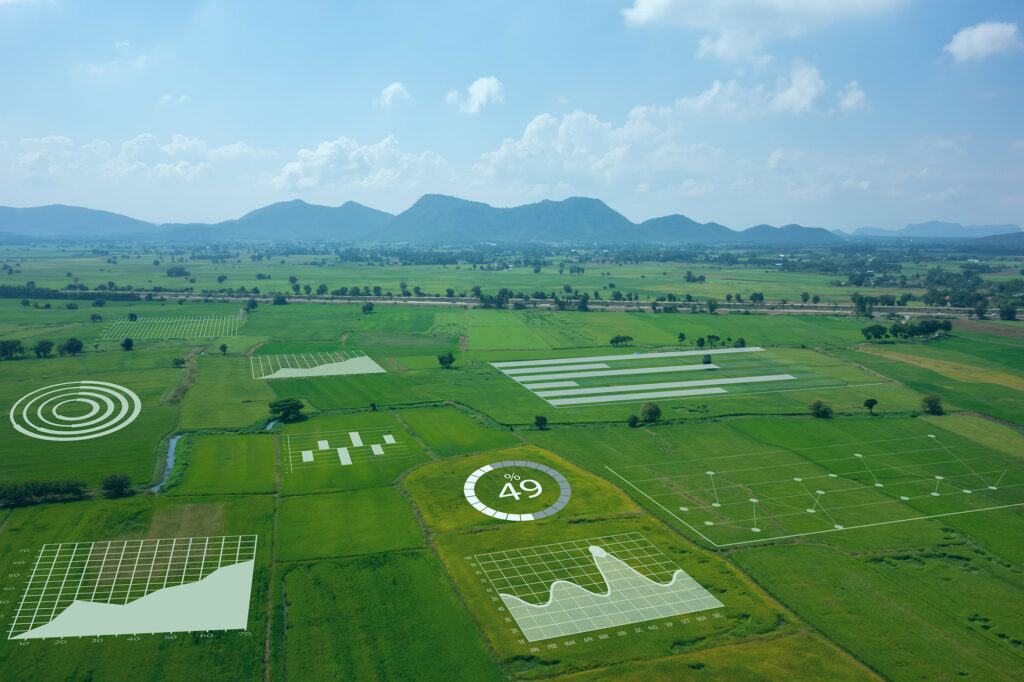
Data has revolutionized the planting, growing, and harvesting of crops on farms worldwide. Here’s why intelligent farmers use data to drive decisions and boost profits. Data, not unlike the introduction of the cotton gin during the Industrial Revolution, is rapidly changing the way farmers make decisions and operate their businesses. It’s not just to save energy or boost profit margins, either. Based on predictions that the population will reach 9.7 billion people by 2050, experts at all levels are looking closely at sustainable ways to increase healthy food production. Tech tools that rely on data are typically the cornerstone of these initiatives. But how do farmers use data exactly? And why is it wise to adopt tech into the harvest cycle? Keep reading to find out. What is data collection in agriculture? Data collection in agriculture is one of the foundational components of smart farming (also called precision agriculture). Relying on technology to gather information throughout the agriculture lifecycle, farmers can narrow the scope of their farming practices and optimize their processes. Examples of data collection in agriculture include: Crop yield data Soil moisture level monitoring Drone or satellite imagery Streamlining and enhancing farming practices Optimal harvest time Why is data critical in agriculture? As the population increases globally, experts look closely at how the agricultural industry can increase healthy food production while remaining sustainable and profitable. Using data to drive decisions and monitor operations helps farmers achieve both goals. How can the IIoT be used in agriculture? IIoT (Industrial Internet of Things) is a term used for the billions of devices worldwide now connected to the Internet. IIoT and automation in agriculture are closely linked to precision agriculture and data collection on farms. Data is typically collected via IIoT-connected sensors and tools that compile, sort, and analyze the information. These devices do more than just offer suggestions, too. Many are autonomous, which frees up farm owners to focus on the big picture of their operation. How are data and analytics transforming agriculture? Here are some ways data is revolutionizing how we plant, grow, and harvest healthy food. Off-Site Crop Production Data From the time seeds are planted to when the optimal time comes to pick a fruit or vegetable, data is changing how—and where—farmers work. Farmers no longer have to be on-site to make critical decisions. Instead, using a computer or even a smartphone, they can execute decisions from home. Healthier Soils Using drones and other imagery technologies, sensors determine soil moisture levels and overall health from the air. This not only improves the quality of the end product but makes farming more sustainable too. Soil erosion is a considerable worry in the eyes of environmentalists, who say monocropping is responsible for soil erosion in America. For example, topsoil levels in Iowa have shrunk by as much as 50 percent in Iowa, one of America’s biggest producers of corn, soybeans, and oats. One solution to this is to regularly rotate plantation sites, which data collection can help identify. Strengthened Supply Chains Food waste at the farm level is an oft-overlooked issue. Many believe waste only happens at the grocery store or once consumers take produce home with them. But one study found that as much as 30 percent of food never leaves the farm and is simply left there to decompose. Increased supplier and shipping costs and blemishes or imperfections on produce are two reasons this happens with alarming regularity. Collecting data helps farmers harvest at the optimal time and identify outlier products early in the growth cycle, making their practices more efficient. Is IIot the future of agriculture? Yes, assuming you don’t already consider IIoT the “present” of agriculture, too. Tech experts believe the IIoT will bring farming practices to the next level, making them streamlined. For example, crop-picking robots that determine ripeness and readiness of produce are becoming a regular thing on farms across America. As price points for these devices decrease, they will likely become ubiquitous. The IIoT plays an integral role in getting crops to the point that they’re ready for robots to harvest them. And as more robots, drones, and sensors are placed on farms worldwide, more data will be available to farmers to make critical decisions that lead to more products using fewer resources. What are the limitations of agriculture data systems? One of the significant limitations of agricultural data systems is a lack of connectivity in remote areas. Collecting data is essential, but if farmers can’t access the information in real-time, the data is less effective and may still lead to delays or costly errors during the growth cycle. Fortunately, FreeWave’s agricultural solutions can solve connectivity issues in the harshest and most remote environments, so farmers never have to worry about accessing their data in real-time. Infuse intelligence into your agricultural operations today with FreeWave. Click here to learn more.
Improved Yields With Less Money and Less Time: the Agtech Revolution
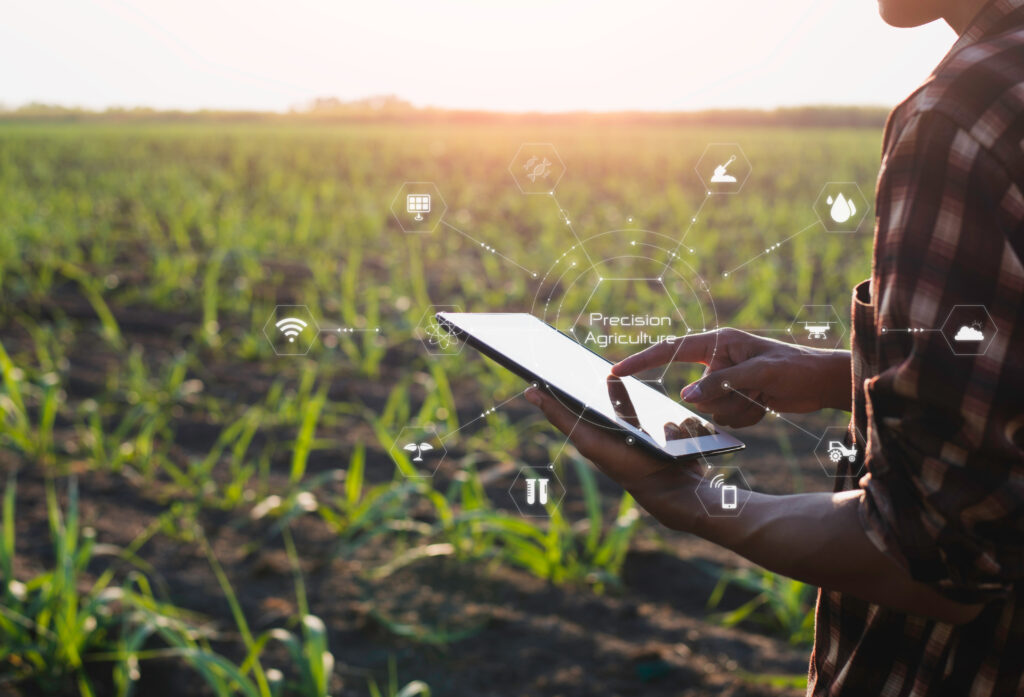
Agtech makes agriculture smarter, and that’s a win for farmers, our planet, and people. Farming and agriculture have always relied on technology and innovation to improve resource allocation and increase yields. For example, handheld tools were the norm until the cotton gin’s introduction in 1793, and chemical fertilizers, grain elevators, and the gas-powered tractor revolutionized farming and agriculture in the 1800s. In the 1990s, farmers started using satellite imagery to plan their work. Today farmers have begun to embrace the IIoT (Industrial Internet of Things) – arguably the most significant agricultural innovation of the last decade. Smart agriculture is now common among farmers, and precision agriculture is becoming the norm, thanks to sensors and automation. Still, there are many miles to go before agtech can more broadly address global food insecurity and combat our climate and sustainability challenges; we will get there. “The key to sustainable agricultural growth is a more efficient use of land, labor, and other inputs through technological progress, social innovation, and new business models. For agriculture and aquaculture to respond to future challenges, innovation will need to improve the efficiency with which inputs are turned into outputs and conserve scarce natural resources and reduce waste.” —The Future of Food and Agriculture: Trends and Challenges, Food and Agriculture Organization of the United Nations Keep reading to learn how agtech helps farmers improve processes and save money, while also meeting the food needs of a growing global population. Precision Farming and Smart Agriculture Many farmers have already adopted high-tech farming technologies and techniques to improve day-to-day efficiency and increase profits. Field sensors allow farmers to gather detailed topographic and resource maps and helps them carefully measure and monitor soil acidity and temperatures. Precision farming and smart agriculture technologies also help farmers predict upcoming weather patterns. Farmers who embrace agtech can monitor equipment, livestock, and crops from mobile devices, and gather real-time produce and livestock feeding data. Technology, like ours, even helps farmers access information to forecast future yield and livestock needs. Sensors and monitoring tools give farmers far-reaching information to drive field management decision-making that enables better resource allocation, increases yields and saves money. For example, real-time data can help farmers identify areas that need more water or fertilizer or find places where crops receive too much water or fertilizer. More agtech use-cases: Automated Irrigation and Compliance Agtech enables farmers to schedule irrigation at off-peak hours and save up to $30,000 per year in energy costs. And with agtech, farmers can automate water consumption reporting processes to ensure regulatory compliance. Grain Bin Level Monitoring and Control Precision farming technologies give farmers real-time visibility into storage conditions and use automation to ensure blowers only operate during off-peak electrical hours, saving up to 50% in overall energy costs. Herd Health Tracking Agtech helps farmers monitor feed intake to deliver accurate rations to improve livestock health and mitigate feed shrink. Self-Driving and Autonomous Tractors Real-time kinetics (RTK) in precision agriculture improves steering and guidance accuracy up to 100x compared to traditional GPS. Smart Weed Control IIoT powers high-accuracy robotic weeders to reduce herbicide consumption by as much as 20%. Using agtech to address food insecurity. By addressing factors like soil health and food waste, agtech can help ensure food is grown as sustainably and efficiently as possible and maximize each bite’s caloric benefit. Agtech revolutionizes virtually every step of the process. And it’s about more than ensuring a bountiful harvest and limiting food waste; it’s also about connecting rural farmers and the world-at-large, uncovering new food distribution channels in remote areas, and introducing alternative cultivation methods in rugged and unforgiving environments. Technology and innovation are a deciding factor in eliminating global hunger. Precision agriculture helps farmers become more efficient, profitable, safer, and environmentally friendly. “Farms and agricultural operations will have to be run very differently, primarily due to advancements in technology such as sensors, devices, machines, and information technology. Future agriculture will use sophisticated technologies such as robots, temperature and moisture sensors, aerial images, and GPS technology. These advanced devices and precision agriculture and robotic systems will allow farms to be more profitable, efficient, safe, and environmentally friendly.” —Agriculture 4.0: The Future of Farming Technology, World Government Summit As agtech adoption expands and farms become more connected, productivity and efficiency will increase in the coming years. We anticipate that millions of agriculture-specific IIoT devices will be in action by the end of 2020. And in the coming decades, the average farm will generate more actionable data than anything imaginable today. Other industries are fearful of technology that replaces humans with sensors and robots, but farmers, always in need of more human power and resources, dream of technologies that increase yields and save money with less time and effort. Is your farm Smart? Find out today – get in touch for complimentary FreeWave Smart farm assessment.




